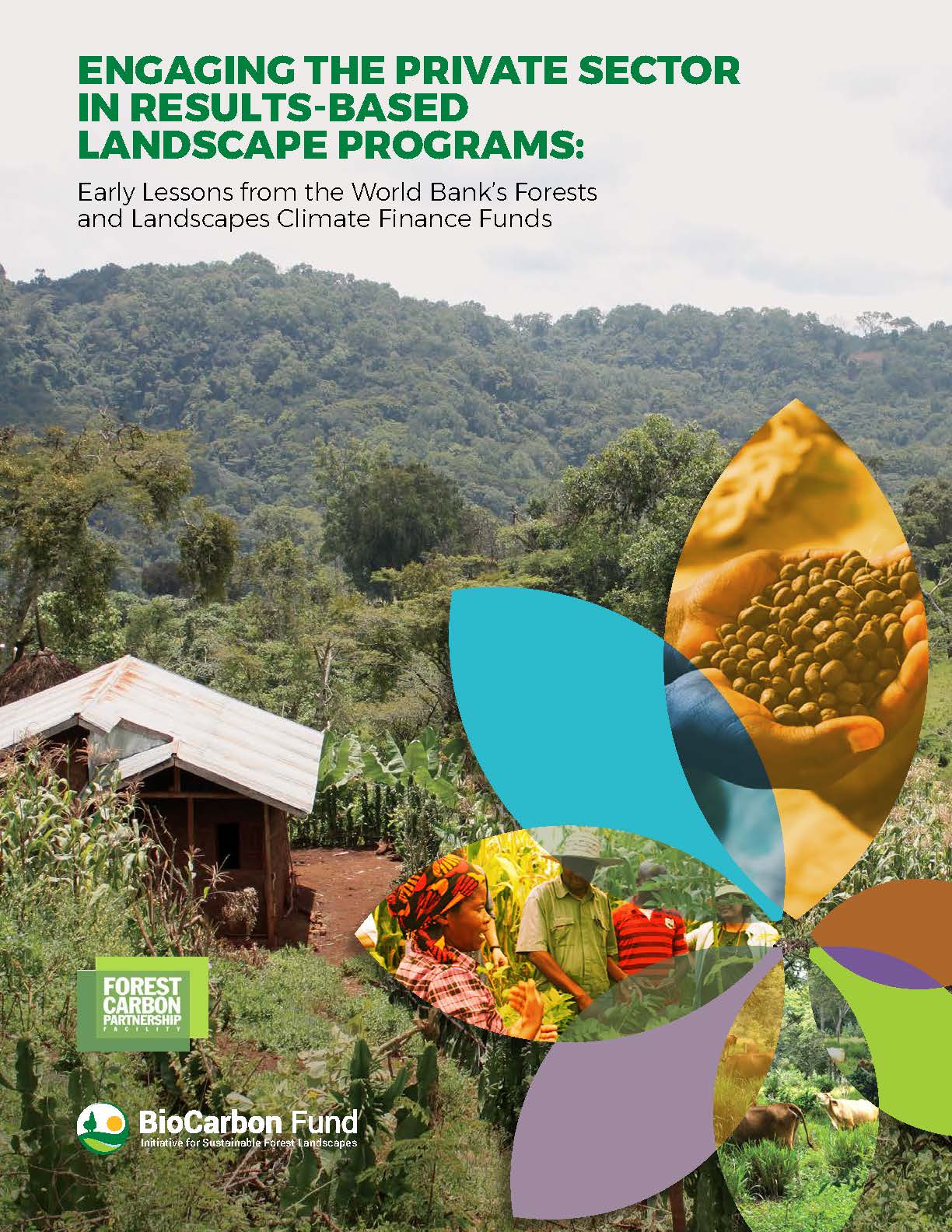Resource information
This paper captures early observations by the World Bank Forests and Landscapes Climate Finance Funds in engaging the private sector, particularly multinational companies involved in global agricultural commodity supply chains, in the context of emission reductions programs to address land use change. The World Bank Group’s Forest Carbon Partnership Facility (FCPF) and the BioCarbon Fund Initiative for Sustainable Forest Landscapes (ISFL) have spent years working with private sector companies that produce, trade or buy commodities that play a role in driving deforestation or forest degradation. These funds have gained valuable insights into what has worked, and what more is required to further shift private sector behavior toward sustainable business models.Relationship building can take time; governments need to better understand the role and implementation capacity of the private sector, and the private sector needs to understand the benefits of a government-led REDD+ and/or emission reductions program. Such partnerships, however, offer promising opportunities to use available climate-related finance to leverage much larger private investments that can support the objectives of the World Bank Forests and Landscapes Climate Finance Funds.While private sector engagement has many challenges to overcome, as summarized in Section two, many new cooperative relationships are being developed as part of the World Bank Forests and Landscapes Climate Finance Fund programs. Section three summarizes these emerging opportunities and ways in which the Forests and Landscapes Climate Finance Funds are overcoming some of the barriers to public-private cooperation. Gaps that remain are highlighted in Section four. The overall message is that private sector engagement requires long-term commitments and unique strategies to meet the needs of each country.


